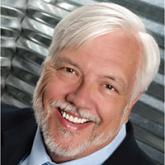Commentary

When is it time to stop hormone therapy?
If a woman started hormone therapy in her 50s for bothersome menopausal symptoms and now she’s in her 60s, there’s a good chance that she may have...
Marie-Eileen Onieal, PhD, CPNP, FAANP

In the 1990s, pain assumed the position of the "fifth vital sign" and has since been measured as such. But this spotlight on pain has resulted in a tug-of-war between adequate management and medication overload.
Pain was introduced as the “fifth vital sign” in the 1990s, ranking it as important a measure as blood pressure, heart and respiratory rate, and temperature.1 The American Pain Society promoted this notion to increase awareness of pain treatment among health care professionals. Emphasizing its importance, the Veterans Health Administration in 1999 launched the “Pain as the 5th Vital Sign” initiative, which mandated a pain intensity rating at all clinical encounters.2
Interestingly, the Joint Commission standards never stated that pain needed to be treated as a vital sign. But many organizations started to require documentation of routine pain screening for all patients. Health care providers were instructed to inquire about pain and to treat it as an essential element of health history.
These changes were quite controversial. The additional measure, while important, competed with other priority screening needs, including diabetes, cancer, and hypertension. There was—and continues to be—quite the debate on whether pain actually can be measured and what impact that information has on the quality of care.
I do not intend to enter that debate here. Instead, I want to discuss what continues to be a conundrum for me: the paradox of pain management.
For many patients, especially those in acute or emergency care settings, the presenting complaint is pain. I would submit that for many the expectation is for pain to be immediately and permanently relieved. But is this a realistic goal?
I recall a lecture on pain management I attended years ago; at that time, the approach involved early identification and prompt, aggressive treatment. When asked “How much medication and for how long?” the lecturer used diabetes as a treatment model, stating, “You would increase insulin until the blood glucose was controlled—don’t be afraid to increase pain medication until the pain is controlled.” In the early days of pain management, that was the accepted norm. The possibility that a “zero” on the pain scale was unattainable for some patients was not considered.
Yet seemingly overnight, once pain was decreed a vital sign, health care providers were mandated to measure it and faced with the responsibility to treat it. This resulted in a vague 0-10 pain scale and providers who were inadequately educated on how to begin pain management. Unlike with diabetes or hypertension, there was no protocol, algorithm, or standard upon which to base a plan of care. Moreover, there was a lack of differentiation between pain that was a short-lived nuisance and pain that interfered with quality of life.

If a woman started hormone therapy in her 50s for bothersome menopausal symptoms and now she’s in her 60s, there’s a good chance that she may have...

A thriving PA-physician relationship has been the cornerstone of quality care. So, are we threatening to uproot the foundation of the profession...

It's impossible to predict the future—especially of health care—but we can, without question, anticipate changes and hurdles as the baby boomer...
